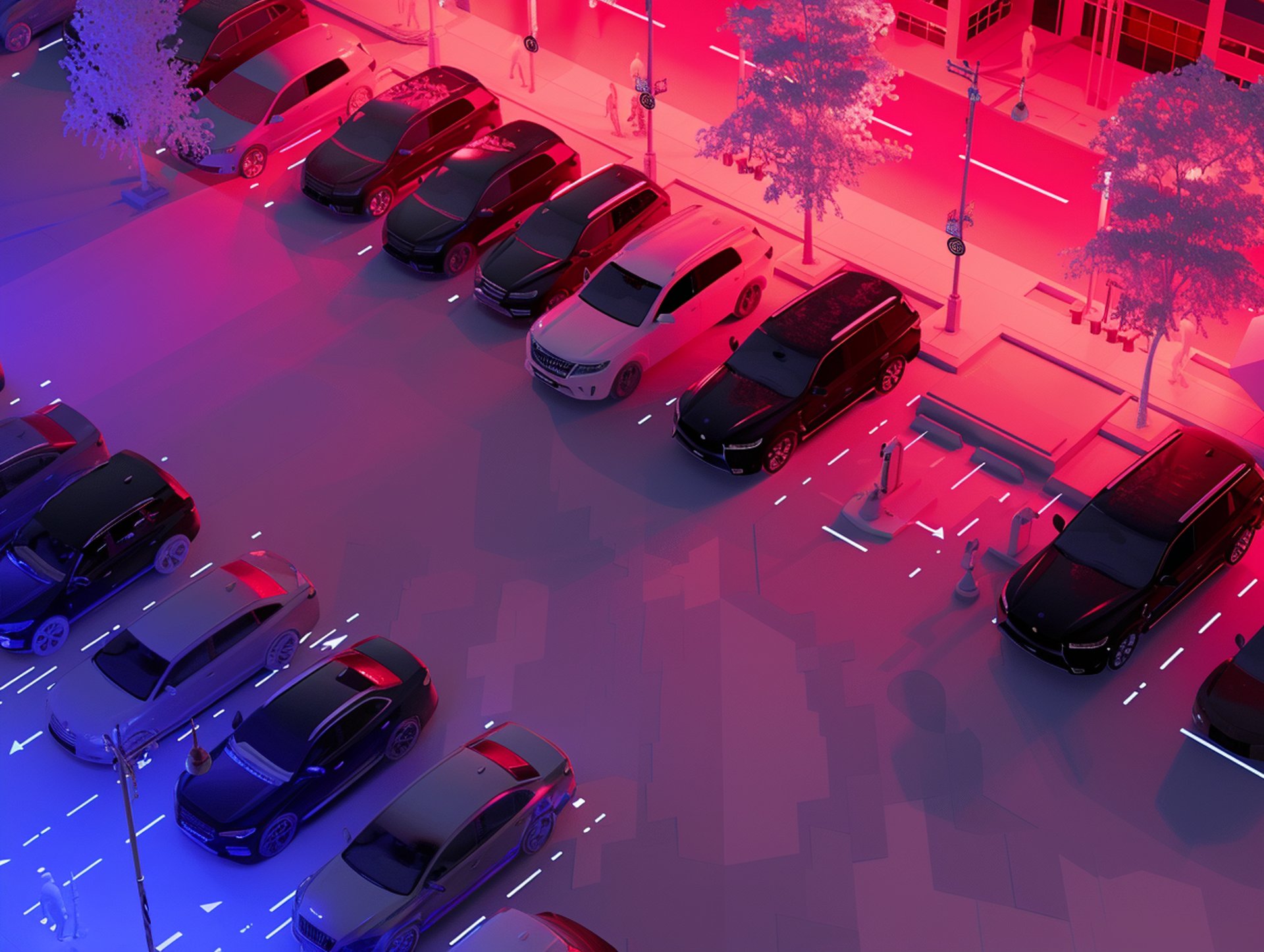
Enhancing Urban Infrastructure and Traffic Management


Imagine a city where traffic flows smoothly, parking is always available, and urban planning is seamless. This vision is becoming a reality as cities increasingly adopt data-driven decision-making to optimise urban infrastructure and traffic management. Leveraging rich parking data and other urban metrics, municipalities can make informed decisions that enhance residents' quality of life, reduce congestion, and promote sustainable development. This article delves into the transformative power of data-driven decision-making in urban planning, highlighting its benefits, real-world applications, and future potential.
The Evolution of Urban Planning
From Traditional to Data-Driven Approaches
Urban planning has evolved significantly over the years. Traditional methods, which relied heavily on manual data collection and intuition, are giving way to data-driven approaches that utilise advanced technologies and real-time data. This shift is driven by the need to address the complex challenges of modern urban environments, such as traffic congestion, air pollution, and efficient use of public spaces.
Key Benefits of Data-Driven Decision Making:
Improved Efficiency: Real-time data allows for dynamic adjustments in traffic management and parking allocation, reducing congestion and enhancing mobility.
Cost Savings: Optimized use of resources leads to significant cost savings for municipalities.
Enhanced Safety: Data-driven insights help identify and mitigate safety issues, making cities safer for residents and visitors.
Sustainable Development: Informed decision-making promotes sustainable urban growth, balancing economic development with environmental conservation.
Leveraging Parking Data for Smart Urban Planning
The Role of Parking Data in Urban Management
Parking data plays a crucial role in innovative urban planning. By analysing historical and real-time parking data, cities can gain valuable insights into traffic patterns, parking demand, and urban growth. This information is essential for developing effective parking policies, optimising public spaces, and enhancing urban mobility.
Applications of Parking Data:
Traffic Flow Optimization: Parking data helps identify congested areas, allowing cities to implement targeted measures to alleviate traffic issues.
Parking Policy Development: Parking data insights inform the creation of efficient parking policies, ensuring optimal use of limited public spaces.
Urban Growth Planning: By predicting future growth patterns, cities can anticipate infrastructure needs and plan accordingly.
Case Studies: Successful Implementations
1. Smart Parking in San Francisco
San Francisco's SFpark program is a prime example of data-driven urban planning. The initiative uses sensors and real-time data to adjust parking prices based on demand, reducing circling for parking and improving traffic flow.
2. Data-Driven Traffic Management in Singapore
Singapore's intelligent transport system utilises real-time data to optimise traffic signals, reducing congestion and improving travel times. The system adjusts traffic lights based on current conditions, ensuring smoother vehicle movement.
Integrating Digital Solutions for Enhanced Urban Mobility
The Impact of Digital Technologies
Digital solutions are transforming urban mobility and parking management. Traditional methods, such as manual monitoring and enforcement, are being replaced by advanced technologies that streamline processes and enhance efficiency.
Key Digital Solutions:
Scan Cars and Automated Payment Systems: These technologies monitor and enforce parking regulations, increasing compliance and boosting productivity.
Real-Time Data Analytics: Provides insights into parking availability, helping drivers find spots quickly and reducing congestion1.
Smart Traffic Management Systems: Use data analytics and real-time monitoring to optimise traffic flow, adjusting signals based on current conditions1.
Tailoring Solutions for Different Cities
While the benefits of digital solutions are clear, it's essential to recognise that different cities have unique needs and challenges. A one-size-fits-all approach is often not feasible. Therefore, digital tools must be configurable and customisable to address specific urban requirements effectively.
Customisation Strategies:
Baseline Solutions: Municipalities can adopt a baseline solution that covers essential functions such as parking enforcement, traffic management, and air quality monitoring.
Modular Approach: Cities can customise these solutions with additional modules or plugins that cater to their particular needs, ensuring flexibility for small and large metropolitan areas1.
The Future of Data-Driven Urban Management
The Importance of Data in Decision-Making
Data is at the heart of modern urban management. Collecting, analysing, and utilising data effectively can significantly enhance a city's decision-making processes. Digital solutions generate vast amounts of data, offering insights into various aspects of urban life, from traffic patterns to parking usage and air quality.
Future Trends:
Advanced Data Analytics: As data analytics technologies advance, cities will gain deeper insights into urban dynamics, enabling more precise and effective decision-making.
Artificial Intelligence and Machine Learning: These technologies will be crucial in automating tasks, improving resource management, and enhancing predictive maintenance2.
5G Networks: The integration of 5G networks will further enhance the responsiveness and intelligence of urban infrastructure, supporting real-time data collection and analysis2.
Challenges and Considerations
While the potential of data-driven decision-making is immense, there are challenges to consider. Privacy concerns, data security, and the need for robust infrastructure are critical issues that cities must address.
Addressing Challenges:
Data Privacy and Security: Implementing strong data protection measures is essential to ensure the privacy and security of urban data.
Infrastructure Investment: Cities must invest in robust digital infrastructure to support data-driven initiatives effectively.
Public Engagement: Engaging the public in decision-making ensures that urban planning efforts are inclusive and aligned with community needs.
Conclusion
Data-driven decision-making is revolutionising urban infrastructure and traffic management, paving the way for smarter and more sustainable cities. By leveraging rich parking data and other urban metrics, municipalities can make informed decisions that enhance residents' quality of life, reduce congestion, and promote sustainable development. As cities continue to evolve, digital solutions and data-driven decision-making will only become more critical, shaping the future of urban living. Embrace this transformative approach and be part of the movement towards smarter, more livable cities.
FAQ Section
1. What is data-driven decision-making in urban planning?
Data-driven decision-making in urban planning involves using real-time and historical data to inform and optimise urban infrastructure and traffic management strategies.
2. How does parking data contribute to smart urban planning?
Parking data provides insights into traffic patterns, parking demand, and urban growth, helping cities develop effective parking policies and optimise public spaces.
3. What are the benefits of integrating digital solutions in urban mobility?
Digital solutions enhance efficiency, reduce congestion, improve safety, and promote sustainable urban growth through real-time data analytics and automated systems.
4. Can data-driven urban management be customised for different cities?
Yes, digital tools can be configured to address different cities' specific needs and challenges, ensuring flexibility and effectiveness.
5. What role does data play in modern urban management?
Data is crucial for modern urban management. It offers insights into various aspects of urban life and enables informed decision-making processes.
6. What are the key digital solutions transforming urban mobility? Digital solutions include scan cars, automated payment systems, real-time data analytics, and smart traffic management systems that use data to optimise traffic flow and parking management.
7. How can cities tailor digital solutions to their specific needs? Cities can adopt a baseline solution for essential functions and customise it with additional modules or plugins that cater to their particular needs, ensuring flexibility for small and large metropolitan areas.
8. What future trends will impact data-driven urban management? Advances in data analytics, artificial intelligence, machine learning, and 5G networks will enhance the responsiveness and intelligence of urban infrastructure, supporting real-time data collection and analysis.
9. What challenges do cities face in implementing data-driven decision-making? Cities must address privacy concerns, data security, and the need for robust infrastructure to support data-driven initiatives effectively.
10. How can cities ensure that urban planning efforts are inclusive and aligned with community needs? Cities can engage the public in decision-making.
Additional Resources
Smart Cities Council—This global coalition offers resources and insights on smart city technologies and best practices. Visit its Website.
National League of Cities: This organisation provides research and advocacy for urban innovation and data-driven decision-making. Visit its Website.
Urban Land Institute—This organisation offers publications and events on sustainable urban development and smart city initiatives. Visit its Website.
